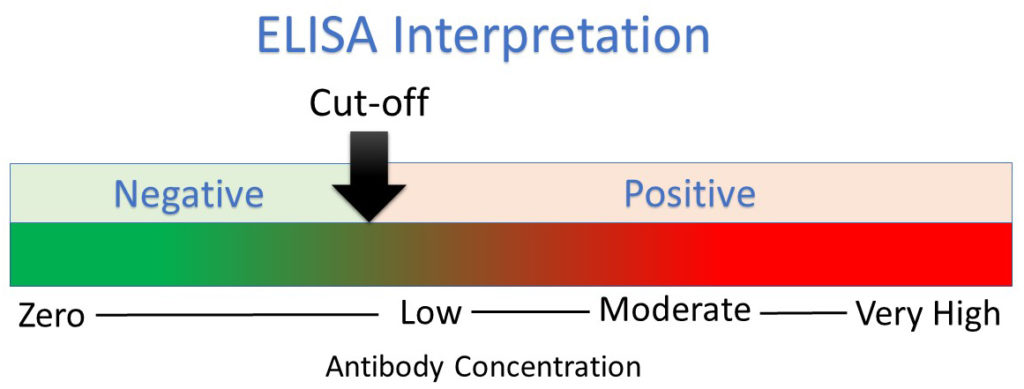For diagnostic tests that produce a numerical result, the point above which test results are classified as positive is called the cut-off. These are usually established by testing a large number of infected and non-infected animals and selecting the value that maximizes the sensitivity and specificity of the test. For diagnostic kits the cut-off is established by the kit manufacturer.
It is well-established that the quantity of antibody is is directly related to: 1) the likelihood of a MAP-infection, 2) the rate of fecal shedding of MAP, 3) the probability an animal will soon develop clinical signs of Johne’s disease, and 4) the degree of decreased milk production for dairy cattle. Thus, knowing the magnitude of the ELISA result, not only the positive/negative interpretation, is important.
All ELISA tests for antibody in serum or milk yield numerical results. ELISA kits typically provide a single cut-off for positive/negative interpretation. However, the numerical results can be interpreted as negative, low-positive, moderate-positive or high (strong)-positive which gives animal owners valuable information. Animal owners are encouraged to use laboratories that provide this quantitative data and multiple levels of results interpretation.